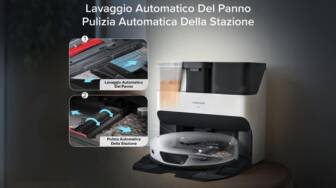Xnor Introduced The World’s First AI Camera Running on Solar Power
A major trend in the development of artificial intelligence is the shift from cloud computing to edge computing. The former is an AI device for remote computing over the Internet, while the latter is more locally calculated and runs algorithms directly on the device. The benefits of edge computing include faster results, greater security, and flexibility. But what kind of products can be made based on edge calculation?
Seattle-based AI startup, Xnor is undoubtedly at the forefront of the technology. This week, the company released a prototype of an AI camera that relies entirely on solar power (no battery or external power supply required). The camera resolution (320 × 320) is not high, and it is equipped with an FPGA chip processor and uses the latest object recognition algorithm technology.
In theory, users can place such devices anywhere outdoors, allowing it to transfer data to you indefinitely. It is compatible with several different low-energy wireless communication protocols (except for Wi-Fi, which consumes too much power), which allows it to send information over dozens of kilometers. Xnor says that if a battery is installed, it can store enough power during the day to keep the camera running during low daylight hours and nights.
Xnor’s chief technology officer, Mohammad Rastegari, said: ‘We are currently investigating practical examples of this camera, including large-scale civilian projects (automobile driving in-vehicle surveillance), drone cameras, etc.’
Xnor’s strength in miniaturization of AI equipment should not be underestimated. In 2017, the company was separated from the Allen Institute for Artificial Intelligence, which has a proprietary method for creating ultra-efficient machine learning systems. Key to this technology is a type of logic circuit known as an XNOR gate, hence the name. It also proves the usefulness of its software by running on low-power, low-calculation devices such as the Raspberry Pi Zero, a tiny computer.
This solar AI camera is not yet available for sale. Although it is self-sufficient in terms of power, there are some restrictions on its operation. For example, how many frames of image can be processed per second depends on how much solar energy is available. Xnor said that when the sun is shining, its transmission speed is 32 frames/sec, but this problem can be solved by a larger solar cell.
Obviously, devices like this will only become more and more common in the future. They are relatively inexpensive (the Xnor model is priced at $10) and are more convenient for the operator. Moreover, data privacy is stronger because the photo video it takes is never transmitted outside the device.








